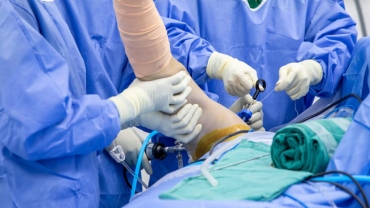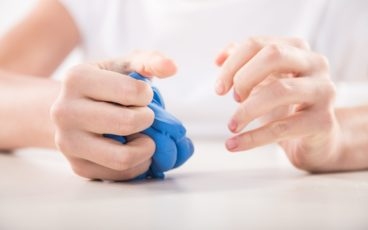A Colles fracture, more commonly known as a broken wrist, occurs when the forearm’s radius bone breaks. This breakage can also be referred to as a distal radius fracture or a transverse wrist fracture. The radius is the largest bone in the forearm with the distal portion located near the end of the wrist. A breakage of the distal end will result in an abnormal bending of the wrist, one of the most common bone fractures in the arm.
Symptoms of a Colles Fracture
A variety of symptoms may be present with a Colles fracture. Tenderness, pain and swelling of the wrist is common. The wrist may have a bent or deformed appearance and there may be bruising at the affected area. Gripping or holding objects is often difficult.
Possible Causes
Colles fractures can happen from falls or hits to the wrist. Those who engage in contact sports are at a higher risk of injury as are bicyclists, skiers and in-line skaters. Elderly suffering from osteoporosis and children whose bones are naturally softer are also prone to Colles fractures.
Diagnosis of Colles Fractures
A physical exam by a doctor is necessary for an accurate fracture diagnosis. One or more sets of x-rays may be required to assess the severity of the breakage. There is also a small possibility that blood flow and nerves could be adversely affected by the fracture.
Fracture Treatment
The diagnosis of the fracture will determine which treatment will be most beneficial to the individual. A splint worn up to a week and a cast worn up to eight weeks are common treatment options. Periodic x-rays may be required to ensure proper healing. Surgery could be necessary for more severe fractures. Working with a physical therapist may be recommended to rebuild wrist strength and improve range of motion.
Colles Fracture Recovery
Recovery time can vary according to the individual. Though a Colles fracture can take up to a year to heal properly, light activities can resume a month or so after cast removal. A feeling of stiffness in the wrist may persist for a time after healing is complete.
Because Colles fractures often occur by accident, these breakages can be difficult to prevent. Proper nutrition, especially calcium and vitamin D, can strengthen bones. These vitamins and minerals can be found in leafy vegetables, dairy products and fish. Weight-bearing and strength training exercises can increase bone and muscle strength. If engaging in sports, wearing a wrist guard is an excellent safety precaution, one that may protect the wrist effectively in case of falls.
If you are suffering from any of the aforementioned symptoms, contact an IBJI physician today.
*This content is for information only and is not intended to replace the diagnosis, treatment, or medical advice from your treating healthcare professionals. The content does not provide medical advice, does not constitute the practice of medicine or other healthcare professional services, and does not create a doctor-patient relationship. You should not rely on this information as a substitute, nor does it replace professional medical advice, diagnosis, or treatment. If you have concerns or questions, seek the advice of your healthcare professionals. If you think you may have a medical emergency, call your doctor or 911 immediately. Do not rely on electronic communications or communicate through this website for immediate, urgent medical needs. This website is not designed to facilitate medical emergencies. The use of the information is at the reader’s own risk. The links are provided for information and convenience only. We cannot accept responsibility for the sites linked or the information found here. A link does not imply an endorsement of a site.




